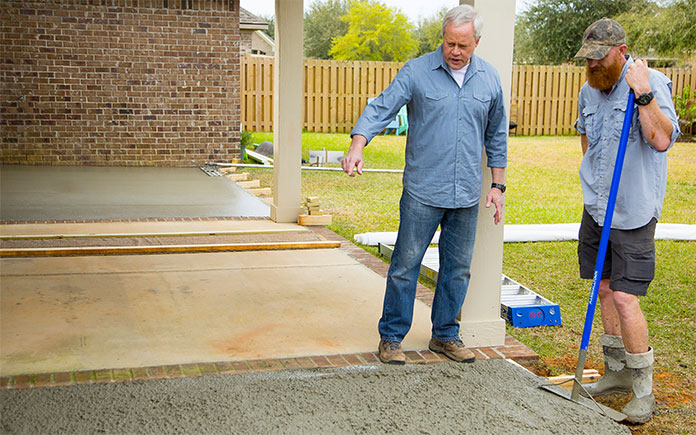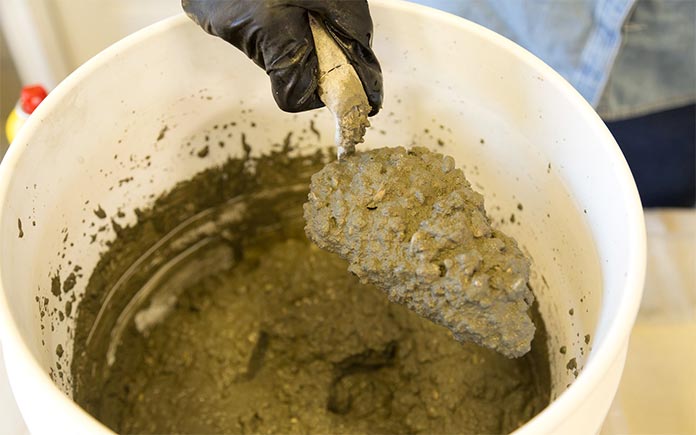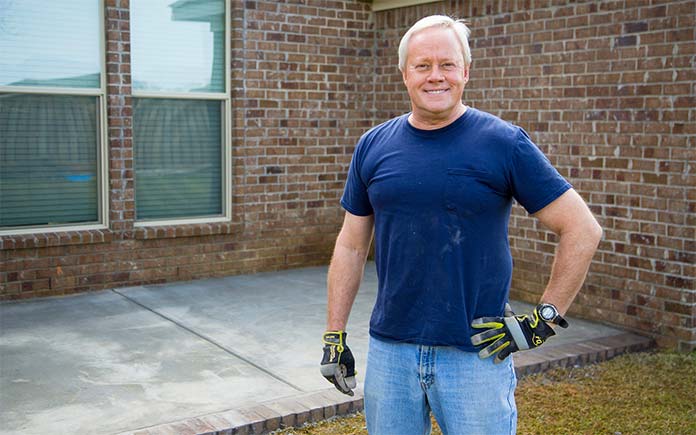
People often say ‘cement’ and ‘concrete’ interchangeably, but these words have different meanings. Here’s what you should know about cement vs. concrete.

What is Cement?
First, cement is not concrete — it’s just one ingredient of concrete. That’s the most important thing to know because many reputable sources confuse the two.
In fact, the dictionary currently lists concrete as another word for cement, and that couldn’t be more wrong!
Cement is a powder that contains all kinds of ingredients you’ll never need to identify — but if you’re wondering, they’re alumina, iron oxide, lime, magnesium oxide and silica.
These ingredients are burned in a kiln and then pulverized to create cement. The end product is just one ingredient of concrete and mortar (along with stucco, thin-set adhesive and tile grout).
The fact is, a project containing only cement wouldn’t last long. That’s because cement is never used alone — it’s always mixed with other ingredients.
But that doesn’t mean cement isn’t a valuable ingredient! A typical bag of concrete mix contains about 15 percent cement, according to the Portland Cement Association, but it would be weak without this powder.
That’s because once cement mixes with water, it creates a paste that binds the sand, gravel, crushed rock and other ingredients in a concrete mix into a hard ‘man-made rock’ that strengthens with age.
Pretty cool, right?
So, just one more thing about cement before we talk about concrete. Portland cement is the most common type used in building materials, but it’s not a brand name.
In 1824, Joseph Aspdin, an English mason, named and patented Portland cement. He likened it to stones found on the Isle of Portland on the English Channel coast.
Just some quick trivia!

What is Concrete?
Now that you know what cement is, vs. concrete, let’s talk more about concrete mix.
While cement is just one ingredient in concrete mix, concrete is the finished product. Once cement mixes with sand and gravel, or crushed stone, and the water is added, the mixture sets and hardens.
The result is concrete, an incredibly strong “man-made rock” that has long been a low-cost, popular building material.
You used to have to buy cement and aggregate materials individually, but now it’s easier than ever to start building something with “ready-mix” that includes the sand, gravel or crushed stone and the binding agent. Just add water!
And Quikrete has made it simple to match a concrete mix product with a project.
Pouring a patio or slab? Better grab Quikrete Concrete Mix in the yellow bag. It’s great for big projects that might take a while.
Setting a fence post? Grab Quikrete Fast-Setting Concrete Mix in the red bag. It’s perfect for small projects you can do in a day.
Creating a countertop? Use Quikrete Countertop Mix in the blue bag. It’s specially formulated to reduce shrinkage.

Mixing It All Together
Concrete mix’s versatility makes it a popular building material that’s not going anywhere. It starts as a dry mixture, molds to any shape with the addition of water, and then sets and hardens.
Now you know the difference between cement vs. concrete — which means you’re ahead of the dictionary!
And you know which Quikrete product to use for your next concrete project.
And, finally, you know that whenever you hear someone talk about their “cement” patio or slab, they actually mean concrete.
So, there’s just one thing left to do: build something!



